Mesquite Wash
Fast Flight Facts
Target Species: Yellow-billed Cuckoo and other desert riparian birds, migrants
Elevation: 2000'
Habitat: Desert Riparian Habitat with a flowing creek.
Overall Birding Rating: 4
Difficulty: 3 (Moderate)
Birding Type: Moderate Hiking, Wading
Facilities: None; Convenient pull offs for parking and recreation purposes
Fees/Ownership: No fees, part of the Tonto National Forest
Closest Town or City/How far from Phoenix: Fountain Hills (closest town); Mesquite Wash is 38 miles northeast of Phoenix
Getting there: Accessed from Highway 87 by well maintained dirt roads that lead shortly to parking areas.
Overview: Mesquite Wash is an outstanding riparian area along the Beeline Highway. Sycamore Creek runs through this wash, where the water levels vary during the year. Sometimes the water flow of the creek is very wide, making it necessary to wade in the water for the approach to birding at this spot. A lot of the wash is lined by willows creek side, with a few cottonwoods and sycamores. Mesquites are prominent on the banks above surrounding the creek. The surrounding area habitat wise is lower Sonoran desert hills.
The bird life at Mesquite Wash varies significantly throughout the year, and the best time to bird this area would be to visit during the spring and fall migrations. It's common here to see a variety of passerine species that are on the move. This spot is one of the best and easier places in Maricopa County to view Yellow-billed Cuckoos. By listening for their unique calls, they can often be located easily. There aren't a lot of tall cottonwoods here, so the cuckoos are easier to be seen in the medium-sized willows along the creek. They are still elusive however, and it still might take time to spy a bird, but the chances here are higher. The Yellow-billed Cuckoos arrive here to breed in June and leave in August, a very short time span of the year. Mesquite Wash has other breeding birds to enjoy, including Common Black and Zone-tailed Hawks, Barn Owl, Gila and Ladder-backed Woodpeckers, Black Phoebe, Ash-throated and Brown-crested Flycatchers, Bell's Vireo, Cliff Swallow, Black-tailed Gnatcatcher, Curve-billed Thrasher, Phainopepla, Lucy's and Yellow Warblers, Yellow-breasted Chat, Canyon and Abert's Towhees, Black-throated and Song Sparrows, Summer Tanager, Northern Cardinal, Blue Grosbeak, and Hooded and Bullock's Orioles. Apart from the breeding species, many different bird species will visit this place in spring and fall migrations, as well as the winter. Anything from abundant to rare may show up here. The mix of desert along with the riparian habitats here will produce a variety of species.
Birding Tip: Mesquite Wash is fairly easy to bird. In warmer months when heat is a big factor, come early. In cooler months, the time of day may have good birding anytime. A good birding method here would be to bring an old pair of shoes that aren't valuable to wade down the middle of the creek, which at times will be wide and up to a foot deep. It's easier to bird down the middle of the creek which provides better views of the willows that line the water. Birding this way will increase success. There are also many trails here, so there are other birding options. Birding is good on both sides of the Highway 87 bridge, especially on the west side which provides more riparian habitat. To explore more of the area in depth, once the creek meets a noticeable fork, take that fork northwest (as shown under the location map in the pages section), and cover that area as well.
Directions: Mesquite Wash can be located along Highway 87 (Beeline Highway), whether coming north or south. It is located between mile markers 207 and 208. A bridge goes over the wash, and while driving over that bridge, Mesquite Wash is very well signed off. Parking is available on the north side of the bridge on both sides, where there are pull offs to the east and the west. The west side is more convenient for birders going to Mesquite Wash, where if parking on the east side, one would have to cross Highway 87 to get to the other side. The west side of the wash has most of the good habitat this area has to offer.
Pages:
Location Map
Take Me There Google Map
Mesquite Wash eBird Data
Scenes and Sights from Mesquite Wash:
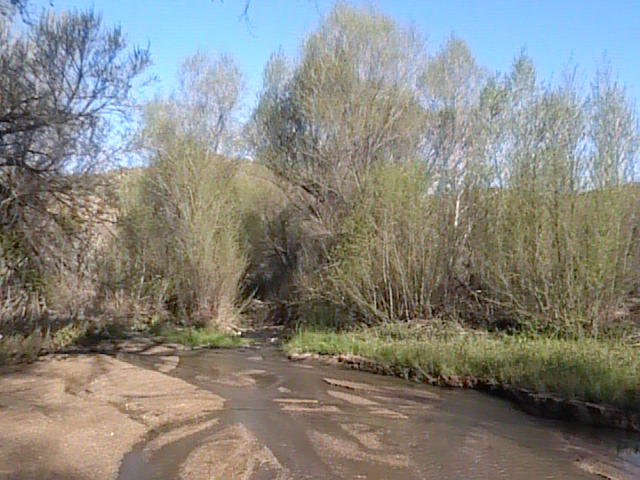
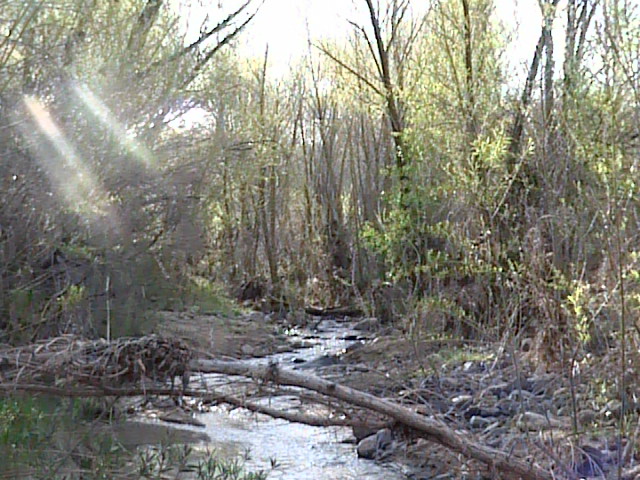
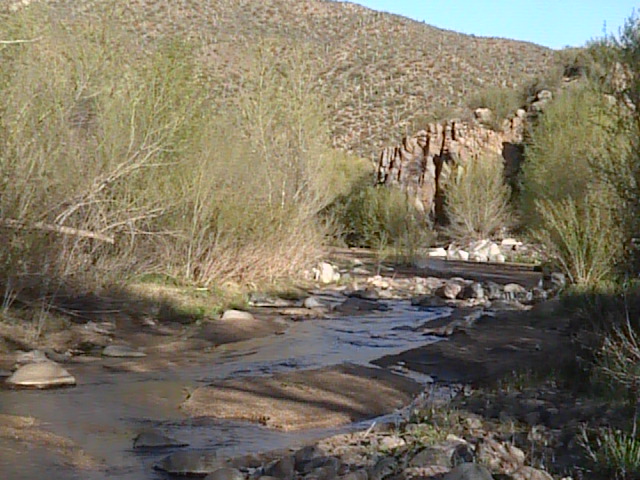
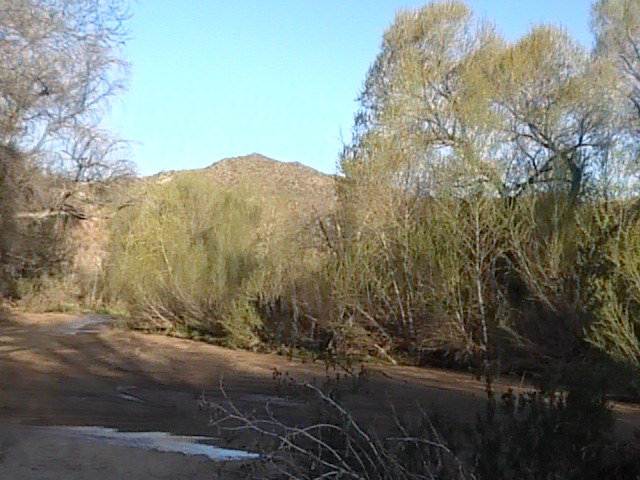
Bird life of Mesquite Wash:
Northern Waterthrush (uncommon migrant)
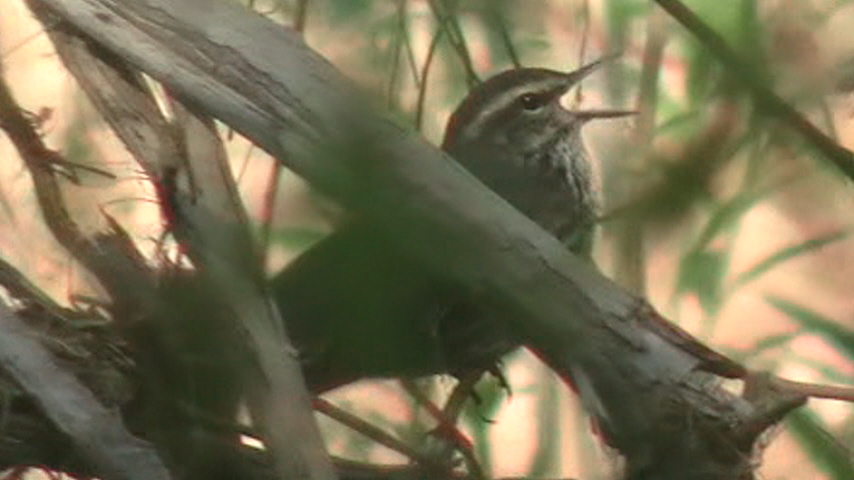
Yellow-billed Cuckoo
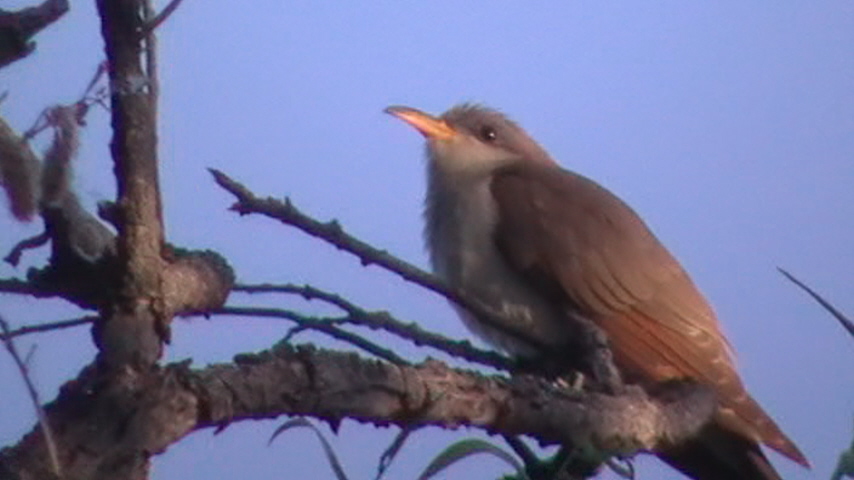
Summer Tanager
Back to Area 1-Highway 87 from Desert to the High Country |
